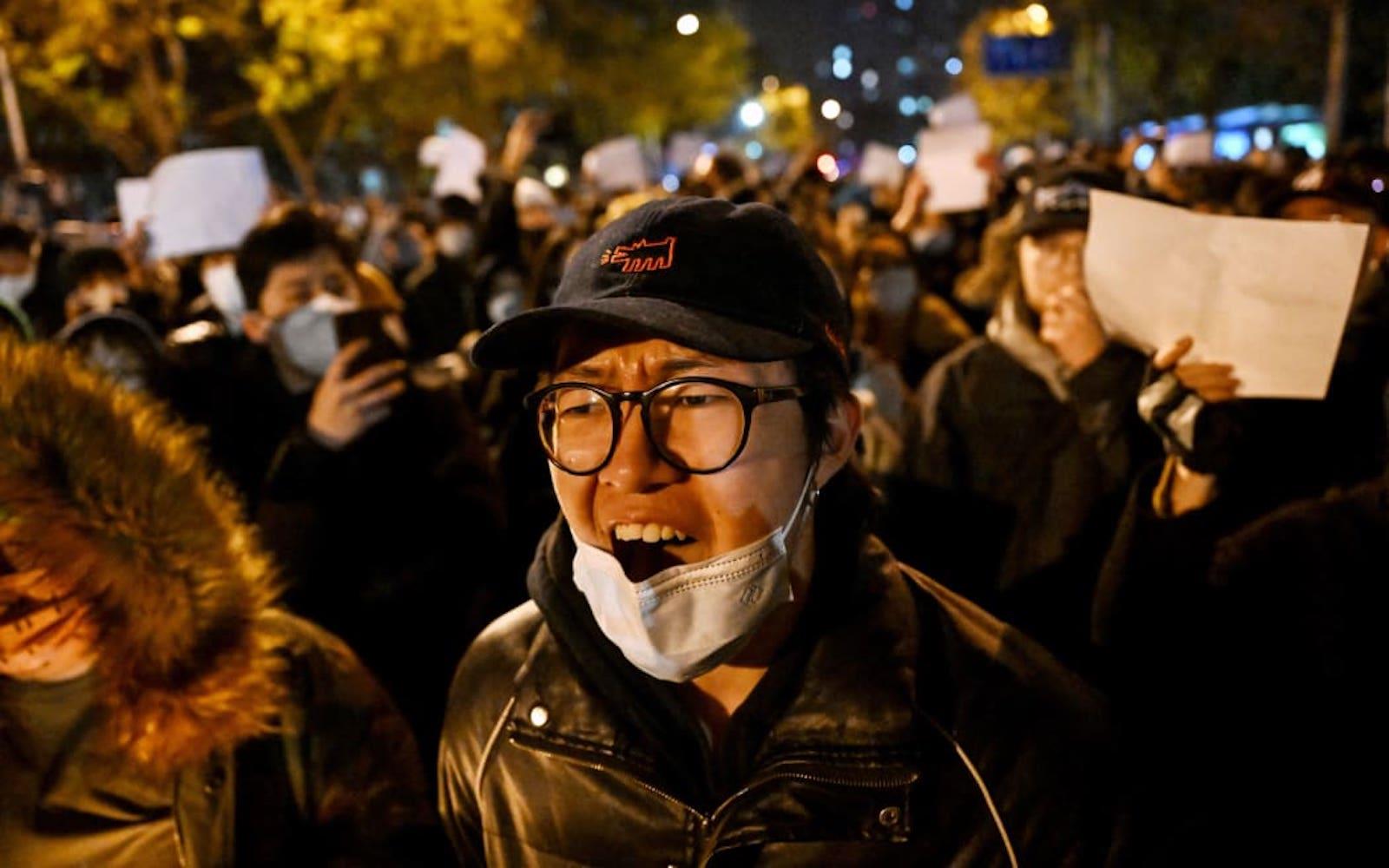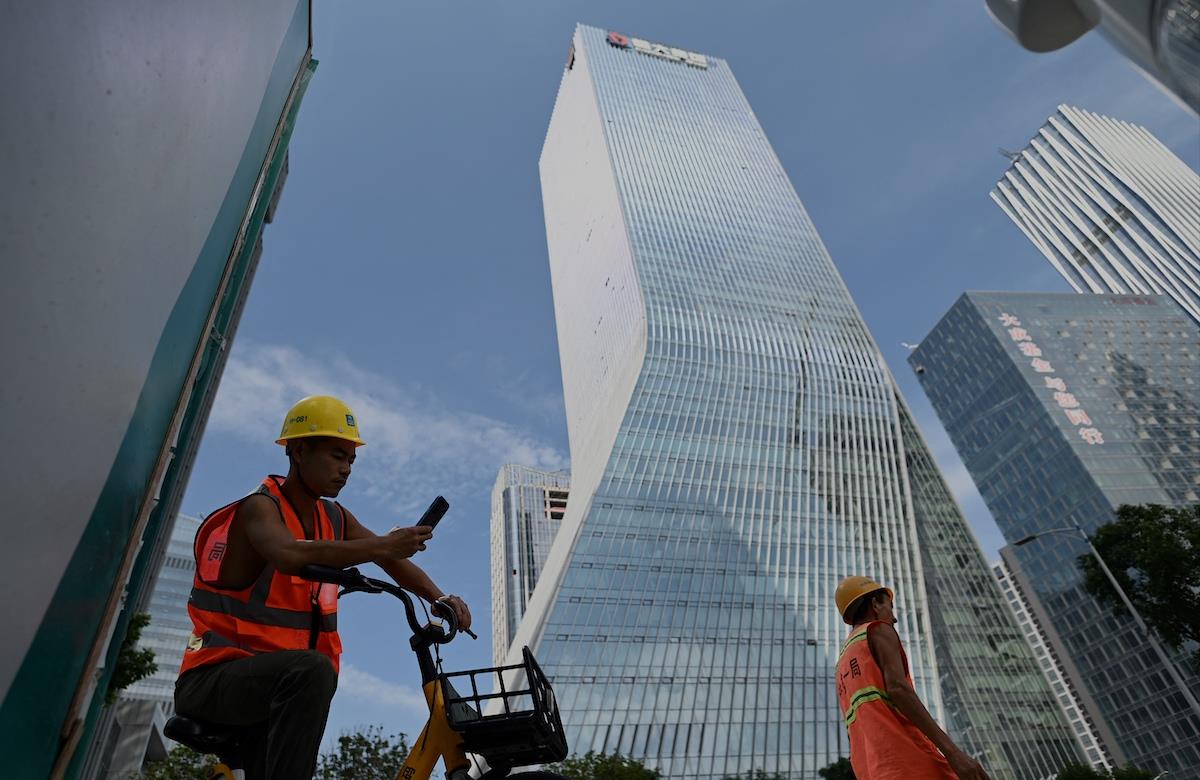(MENAFN- Asia Times) As Beijing pivots energetically from Covid lockdowns to economic recovery, no one is in a hotter seat than Yi Gang, governor of the People's Bank of China.
Since the 1990s, the Group of Seven nations has adopted a“central-banks-take-the-lead model.” For better or worse, political polarization and gridlock had government officials passing economic maintenance duties to monetary officials. Now China is, too.
In Beijing's case, Yi's team is the obvious choice to lead the charge back toward 5% growth in 2023. President Xi Jinping's moves this week to scale back pandemic curbs sets the stage for a the likes of which Asia has never seen before.
This onus is on the PBOC to prime the pump, and Yi is already on the case. The PBOC's November 25 move to support struggling companies with a cut in reserve requirement ratios was a preview of a stimulus policy about-face.
Days earlier, on November 21, Yi's staff met with big commercial banks, green-lighting them to do something the PBOC previously discouraged: lending dollars from their overseas branches to the offshore subsidiaries of mainland China property developers. That calmed nerves in a sector that can generate as much as 30% of gross domestic product.
But risks abound as Yi refills the proverbial monetary punchbowl. The PBOC needs to get the balance right between stabilizing growth and not encouraging bad behavior among corporate borrowers.
Asia Times' Global Polarity Monitor newsletter this week detailed the ways in which reviving the economy will take precedence over the government's desire for long-term structural reform. For example, authorities are instructing large state banks to make an additional 1.28 trillion yuan (US$185 billion) available to developers.
Early on, regulators set a high bar for collateral quality. Standards have since been relaxed.
Herein lies the rub. Japan is a cautionary tale of the high cost the China might pay 10 years from now for an all-stimulus-no-reform response to today's“zero Covid” economic trauma.
The Beijing rollercoaster
In recent days, investors got a rare glimpse of a chastened Chinese government admitting a mistake – and bowing to public pressure. The worst social unrest since students took to Tiananmen Square in 1989 led global news reports from New York to London to Tokyo. And heightened a capital-flight problem China has faced all year.
Economist Jonathan Fortun at the Institute of International Finance notes that“China deserves a special mention in the global flows picture.” Case in point: Chinese debt saw outflows of $3.1 billion in November alone.
That exodus seems poised to reverse itself as the reopening of trade gains momentum. Yet even as China reduces , it faces intensifying international ones.
In November, mainland China's exports and imports fell at their steepest pace in at least two and a half years as demand faltered abroad and at home. The 8.7% plunge in exports from a year earlier was markedly worse than feared, the weakest showing since February 2020.
At home, the property slump contributed a sharp 10.6% in November imports. It was the most precipitous drop in May 2020.
“Exports are likely to shrink further over coming quarters,” says Julian Evans-Pritchard at Capital Economics.“Outbound shipments will receive a limited boost from the easing of virus restrictions, which are no longer a major constraint on the ability of manufacturers to meet orders.”
But“of much greater consequence,” Evans-Pritchard says,“will be the downturn in global demand for due to the reversal in pandemic-era demand and the coming global recession.”
All this adds urgency to the PBOC's policy decisions in the days and weeks ahead. As Evans-Pritchard notes,“the shift away from zero-Covid and step up in support for the property sector will eventually drive a recovery in domestic demand but probably not until the second half of next year.”
The strains on household-name businesses have been roiling global markets. Take Apple supplier Foxconn, which saw revenue decline 11.4% in November year-on-year as Covid controls hit production at the globe's biggest iPhone factory in Zhengzhou.
The fallout from mass quarantine could give way to what economist Zhiwei Zhang at Pinpoint Asset Management says may be a“bumpy reopening” process.

Demonstrators protesting against strict Covid measures gathered in the capital Beijing for a second night. Image: Screengrab / RNZ
The unknowns/risks pipeline
Not least of the unknowns is how tolerant Xi's Communist Party might be if Covid infection rates explode. Economists at Nomura add:“Ending zero-Covid is encouraging and should be quite positive for markets, but we caution that the may be gradual, painful and bumpy.”
Another complicating factor: the yuan's 18% drop this year. With global inflation surging thanks in part to Russia's Ukraine invasion, the yuan's declines are putting Asia's biggest economy in harm's way. The threat of stagflation is a live risk for the global economy in 2023.
This means the PBOC's latitude to maneuver may be more limited than investors think. The more Team Yi hits the monetary gas – in contrast with most major central banks tapping the brakes – the wider the gap becomes between Chinese government bond yields and those in the US and Europe.
That could further depress the yuan and trigger larger capital outflows. Worries can be seen in Yi's increasing embrace of controversial tools to infuse fresh liquidity into Chinese policy banks.
Case in point: a move in late September by the PBOC to pump more than $15 billion into the Pledged Supplemental Lending facility. That channeled extra capital to China Development Bank, Agricultural Development Bank of China and Export-Import Bank of China. It was the first such increase since February 2020 and underlines Beijing's increasing reliance on semi-official lenders to juice GDP.
This PSL mechanism dates back to 2014, when Yi's predecessor Zhou Xiaochuan helmed the PBOC. It helped boost the back then despite widespread criticism the ploy inflated the real-estate bubble in lower-tier cities. Resurrecting the tool signals government determination to support prefectural economies – and the risks inherent in that exercise.
Hence the unique balancing act Beijing faces. Over the last month, Yi's team has warned that bad behavior on the part of borrowers will not be tolerated.
Property warning
Analyst Sandra Chow and research company CreditSights note that“while the authorities have announced many easing measures for the sector in recent months, it is rare for the PBOC to issue a statement explicitly addressing the problem. This, and the scale of these support measures, suggest that while the government is keen to avoid the moral hazard of a full sector bailout, it is also acutely aware of the damage that would occur if the sector were to fall into even greater distress.”
Analyst Eunice Tan at S&P Global adds that“we believe Beijing is reluctant to deliver an all-encompassing bailout of overleveraged borrowers for fear of encouraging further moral hazard. Government stimulus packages are blunt instruments and funds don't always go where needed. Consequently, tighter oversight on infrastructure financing could come, to improve the viability of entities.”
All the more reason for the PBOC to take a nuanced approach to channeling just enough cash to entities and sectors under strain – but (and this is the tricky bit) not too much cash.
In mid-November, after a triggered a barrage of withdrawals from fixed-income products, Beijing regulators called on banks to report on their wherewithal to meet short-term obligations. This increased transparency will come in handy for PBOC officials looking for cracks in the financial system.
Under Zhou's PBOC leadership from 2002 to 2018, policymakers attempted to steer away from the Bank of Japan's missteps. The BOJ has spent more than 20 years cutting interest rates to zero, and beyond, to prop up collapsing property markets, their lenders, and the zombie companies the 1980s“bubble economy” left in its wake.
Yet all that largess presided over the“zombiefication” of the entire economy. With money essentially free and all arms of the government working to weaken the yen, Japan Inc. lacked urgency to raise its competitive game.
Nor did the government feel the need to act boldly and expeditiously to build economic muscle. Mass complacency explains why Japan is trailing South Korea and even Indonesia in producing tech“unicorns.”

China's property market continues to be in economists' focus. Workers in front of the Evergrande headquarters in Shenzhen in southeastern China on September 26, 2021. Photo: AFP / Noel Celis
A delicate balancing act
All this puts Yi's team today in a“tough spot,” observes economist He Wei at Gavekal Research.
As Covid controls dented demand, external demand weakened and the property slump has deepened, officials“have been cautious about rolling out economic support measures, lest they undo the de-risking work of recent years, reignite the debt boom, and magnify moral hazard.”
That's why, He argues, Beijing wants to stabilize things within a“reasonable range” by limiting the return of runaway leverage.
It won't be easy. Economist Arjen van Dijkhuizen at ABN AMRO Bank notes that as“Beijing doubles down on , restoring trust remains key, and may take time.”
The Xi government's response was“initially cautious, as it wanted to contain overall leverage and moral hazard.” Now, he says, there is“a more direct support package.”
Highlights include a PBOC relending program, more room for property lending by banks, eased restrictions on shadow-bank and equity financing, government bond guarantees, and the extension of payment deadlines with a wave of debt maturities due in the coming months.
Bottom line, van Dijkhuizen concludes,“The measures, together with a relaxation of zero Covid, should help to break the vicious cycle, but it may take a while to restore homebuyers' trust and revive property sales – particularly if the exit from zero Covid is disorderly.”
Until investors know for sure how the process will unfold, the PBOC will be holding the reins. And global markets will be following Yi's every word and deed as never before as the PBOC struggles to stabilize China's economy.
Follow this writer on Twitter @WilliamPesek





















Comments
No comment